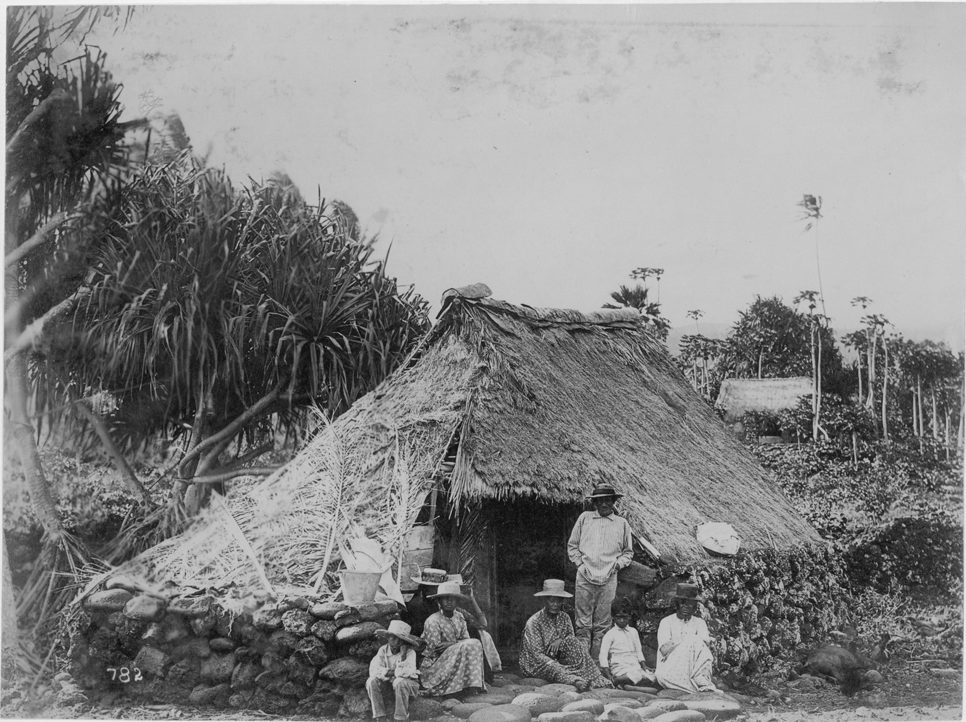Native Hawaiian genealogy presents an idiosyncratic slew of challenges and familial puzzles to solve.
It’s the aha! moments that make researching Hawaiian genealogy so satisfying. Like finishing a 500-piece jigsaw puzzle or filling in the last word of a crossword, finding the biological parents of my client’s hānai (adopted) great-grandmother gave me the feeling of elation.
After finding a 1985 obituary with my client’s great-grandmother’s maiden name at University of Hawai‘i at Mānoa’s Hamilton Library, and then coming across a 1910 census with her listed under her adoptive father’s name on Ancestry.com, I looked into her marriage records by searching the genealogy indexes at Ulukau.org, a Hawaiian electronic library.
There I discovered that she had been married twice. When I visited the Hawai‘i State Archives and pulled the two marriage licenses, my eyes could have lit up the room. The first license I found listed her adoptive parents. The second marriage license listed the full names of her biological Hawaiian parents, with her adoptive mom as a witness.
Not everyone has such luck in their family-history searches. As with researching ancestry for any other ethnicity, Hawaiian genealogy has its own sets of challenges, and determining adoptive relationships is one of the most complicated. It’s also one of the many things that make Hawaiian genealogy unique.
There are a few types of Hawaiian adoptions to consider: ho‘okama (adopting another person’s child, usually by the desire of the child and older adult, looked negatively upon by the biological parents), ho‘okāne or ho‘owahine (an adoptive platonic marital relationship between persons of opposite sex), and hānai (a child reared in another household as their own).
Hānai adoptions were almost always of children from within one’s family, with first-born males considered to belong to the father’s side and the first female child said to belong to the mother’s side; if a grandparent asked for a grandchild, it was impossible to refuse the request.
I think a lot of people get really angry towards their kūpuna that they didn’t record information.

Many of the resources and much of the documentation regarding genealogy only go back to the 1800s, and unless the family line has a link to an ali‘i (chief) whose lines are preserved, the information stops there. And, as is the case in some of my own family lines, you have to learn to be OK with that.
Records can get lost or burned in fires, kūpuna might not have participated in the Territory of Hawai‘i census nor claimed land during its redistribution in the Māhele, when the concept of privately-owned property was instated by the government. Unless personal family records were kept or stories of the past were passed down, that knowledge is lost in time.
“I think a lot of people get really angry towards their kūpuna that they didn’t record information,” says Sarah Tamashiro, who has been a professional researcher since 2014.
She, along with professional genealogist Ami Mulligan, led a series of genealogy workshops at the Waiwai Collective earlier this year.
“Colonization and breakages in the passage of information is why a lot of people don’t have genealogy,” Tamashiro says. “It’s also due to certain choices that people made within their own family. They said, ‘This isn’t for you,’ or ‘This isn’t important for you to move forward and so I’m not going to say anything.’ And all of these different reasons or personal family choices is why certain families don’t have that information.”
With blood-quantum requirements to apply for Hawaiian Home Lands and documented proof of Native Hawaiian ancestry needed for admission to Kamehameha Schools, scholarships, and financial aid, Hawaiian families are trying their best to gather information and create their own genealogical charts. Knowing where to go and what to research helps researchers begin their searches, but it’s equally as important to understand the history and laws of the times.

“It’s easy to put what your understanding of the current law is on the past and to just assume that it’s the same, but in reality, you really can’t,” says Mulligan, who owns Discover Your ‘Ohana, which offers professional genealogical services.
For instance, prior to 1860, when the Hawaiian kingdom passed the surname law, Hawaiians used singular names. There was no patrilineal surname passed down to children. Also, prior to 1911, many people didn’t have birth certificates and didn’t file for one, until it was a requirement for jobs, government benefits, and so on.
Looking at documentation through a lens of social and cultural practices of that time period also helps make sense of what you find. In some cases, when Chinese immigrants and Hawaiians married, surnames would be Hawaiianized, such as Ah Kam becoming Akamu or Wai becoming Awai. Some Hawaiians also found it more prestigious during the 1920s and ’30s to claim to be half Caucasian or half Chinese, even when the family was pure Hawaiian, and claim Caucasian-sounding names. Going back another generation in searches should show what family names were before the changes.
Understanding practices of the time also helps with knowing what to look for. Traditionally, Hawaiians had many types of names, such as a spiritual name, a secret name, a nickname, or a name inspired by an event. Usually only one name was used for legal documents, but even so, it’s important to search all names known for a person when researching genealogy.

It is also essential to keep an open mind when researching. Stories that are passed down may not always be accurate or proven, such as relations to ali‘i. “I think that you can’t dismiss anything, but when you’re researching, you shouldn’t have this specific goal in mind,” says Mulligan, adding that you can’t shove square sources into round holes. “You have to go with the sources.”
Tamashiro thinks the desire to be linked to ali‘i is the product of our historiography.
“The types of books we have about Hawaiian history is largely about ali‘i. And we don’t have books about, you know, everyday people, about commoners or about maka‘āinana,” Tamashiro says. “But if your family was the best sweet-potato farmer in rural east side Moloka‘i, that’s awesome. And I think that needs to be celebrated just as much as being able to claim an ali‘i.”
No doubt, the research that goes into building a genealogy chart takes time and may not be completed in your lifetime. But the sources and stories that you document today are lasting gifts to future generations, who can continue connecting pieces of the puzzle.



